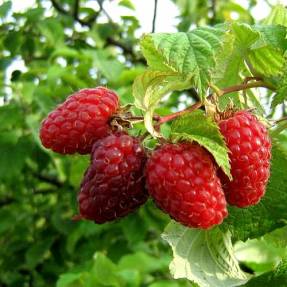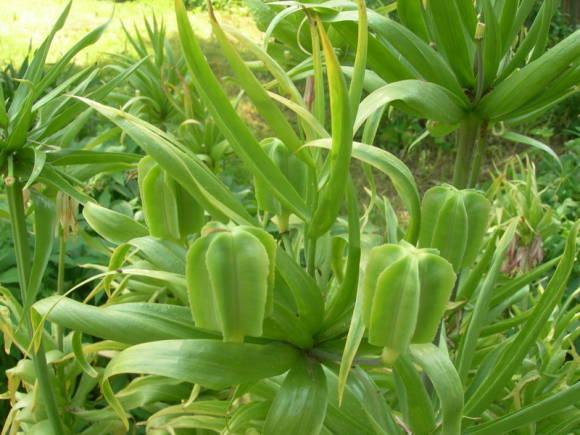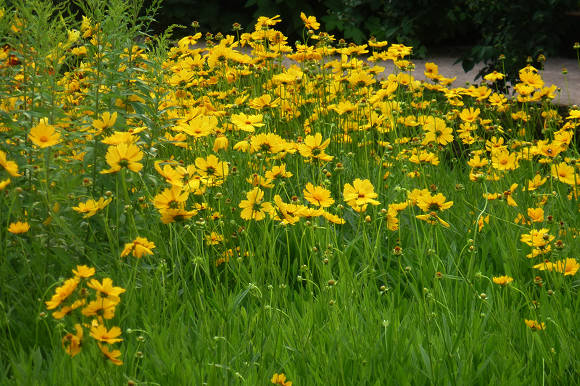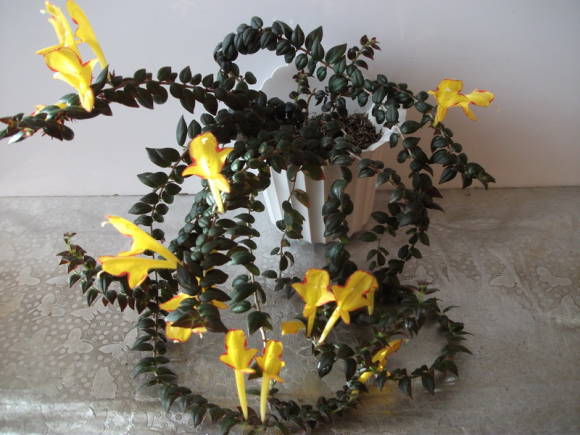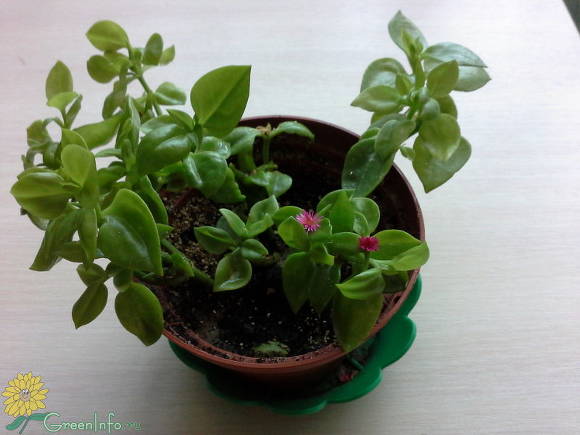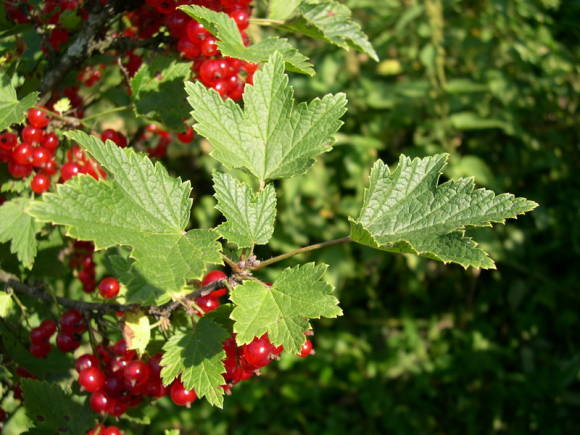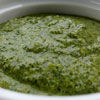 |
Until recently, the container method of vertical gardening was a novelty for us, but now everyone has become accustomed to luxurious hanging baskets of petunias, calibrachoa, fortunias, ipomoea sweet potatoes and purslane in urban landscaping and they use this technique with pleasure on personal plots, in small gardens and in the design of balconies ... Annuals are predominantly used for container growing. This is very convenient - they removed them in the fall and put the vacated pot for storage. However, container plantings are also acceptable for compact perennial plants, which, in monoculture or in combinations (including with summer plants), make it possible to create extraordinary, bright, sometimes exotic compositions.
Planting perennials or even small shrubs in containers has the same advantages as for annual plants - ease of care (only watering and feeding is needed), almost complete absence of weeding, and mobility. For example, for the arrival of guests, you can collect several pots of plants around the gazebo and patio to relax from all over the garden and create a real holiday mood. However, there is also one significant drawback - the need to transplant perennial plants into the ground, or to add pots in the garden or arrange them for wintering in a house, a cool greenhouse or basement. But beauty, as you know, is worthy of small sacrifices. In addition, for some desirable but thermophilic plants, wintering in a frost-free room is the only way to survive the frost. If you are not afraid of this aggravating circumstance, let's deal with the possible assortment.
 |  |
Houseplants
Despite the fact that for many subtropical plants (citrus, myrtle, some decorative deciduous) it is recommended to move to the garden for the summer, which undoubtedly enhances growth in the fresh air, we do not recommend doing this. If you decide to use any indoor plants in a container garden composition, it is better to root cuttings or young rosettes in advance, from February, and use the plants as disposable (about the cutting technology - in the article Cutting indoor plants at home). You might want to buy something specifically to implement the conceived design. For placement in sunny places, drought-resistant agaves, Blossfeld's Kalanchoe (which blooms beautifully in the open air all summer long) are used. With a small shade and constant moderate soil moisture, plectrantus, crested chlorophytum, aucuba, Japanese fatsia, alternating hemigraphis, decorative leafy and flowering begonias, leaf hypoestes, southern cordilina, irezine, gelichrizums, tolielrinia, rosacea, rosinia, gelichrizums, ivy, rosacea are suitable , large-fruited cypress. However, the latter can be replaced without prejudice to the composition with an annual cochia and, if necessary, shaped with a haircut. Let's start the conversation about perennials with spring flowering plants. First of all, these are bulbous plants, but they must be planted at the usual time - in the fall, and added in pots in the garden. However, this is also a way out for those who bought, for example, tulip bulbs at an inopportune time - in late winter or early spring, although still try to get bulbs on time in order to get good replacement bulbs at the end of the season, and not a small baby. It is good to combine them with biennials - daisies, forget-me-nots, Cheyranthus Chery, Vittrock violets, and even better - with a perennial horned violet. But such a composition, due to the short flowering of the entire community, will still require either replacement with annual plants or replanting of perennials - for example, garden geraniums. An interesting combination is obtained during the flowering period when used in joint planting of berry and hellebore.Other perennial crops for containers are an unlimited selection of varieties of Heuchera, tiarella, compact hosts, gravilates, aromatic plants with decorative fragrant foliage - English and French lavender, varietal oregano (for example, yellow-leaved Aurea), creeping and lemon-scented thyme, lemon balm , decorative deciduous varieties of medicinal sage and flowering sage - oak sage. By the way, spicy herbs can be pinched a little for summer teas, this will only increase the formation of new shoots. For shady conditions, ferns will be good - even those species that winter poorly with us can be used in pots and flowerpots. Undemanding rejuvenates have long established themselves as wonderful container plants. For lovers of rock gardens, the question of choosing plants will not be at all - the most unpretentious of the "Alpines" are perfect for container growing, for mini-rock gardens. Pot growing is suitable for miniature and patio roses, some floribundas and small ground cover varieties (Cinderella, Goldjuwel, Charmant, Fortune, Coco, Knips, Mainaufeur, Neon, etc.). Planting roses with lavenders, hyssop, Steller's, Schmidt's wormwood or hybrid Powis Castle look wonderful (the latter is winter-hardy only up to -20 ° C, it winters better in the basement). For container planting, you can use the gift patio roses available at all flower shops. They should be treated more like disposable plants, although some varieties are hardy enough to survive for several years under cover. The classic European version - boxwood trimmed with a ball or cone - in a pot is acceptable only in a small shade, otherwise it will burn in the sun. For the winter, it needs to be buried in and covered in a karskas way. Do the same with Fortchun's evergreen euonymus and Japanese, or move them to a cool windowsill. Traditionally, the use of heathers in containers. A beautiful rug in a low flowerpot placed in the shade forms a winter-green subshrub of the apical pachyzandra (you can combine the main species with the Green Carpet variety, which has a light green foliage color, or the variegated Variegata variety). More unpretentious and rather drought-resistant shrubs that will feel great in container compositions are bright small varieties of spirits (Golden Princess, Gold Flame, Little Princess) and Thunberg barberries (Admiration, Goldalita, Tiny Gold, Golden Ring, Kornik, Rosey Rocket and etc.). Barberries should be used only when the container is away from the paths and there is no danger of catching on its thorny branches, especially for children. They can be trimmed. Derain white Ivory Halo with white-bordered foliage grows slower than other varieties, is short and well-tolerated, ideal for growing in large flowerpots. In the sun or in partial shade, cascading growth will give Stephanandra notched-leaved (its Crispa form with more indented foliage is especially interesting). From the heat-loving shrubs, you can plant the graceful variegated and low keria Japanese Picta. There is a compact Buzzy buddley for container growing. For the winter, it is cut off and covered with sand and wood ash. The black elderberry Black Lace has a wonderful crown with purple openwork foliage and pinkish airy inflorescences, which perfectly combines with the yellow-leaved forms of any plants, and with green ones - no worse. Lovers of clematis can plant early large-flowered varieties of the Boulevard series adapted to container content - Angelique, Oоh-la-la, Chantilly, Parisienne, Terry Kaiser, blooming in early summer on last year's shoots, and under favorable conditions - again in July-August on the shoots of the current year ... They belong to the 2nd group of pruning: in the fall, weak and dead shoots are removed, the rest are pruned, leaving 10-15 nodes under the shelter.Although varieties that can be completely cut off before winter are more convenient for our zone, container cultivation allows us to provide them with a warmer shelter. Their numbers of cereals are most acceptable, not very widening in breadth, low, with an interesting color of foliage. For example, large manna Variegata, gray fescue, wolf sedge Amazone Mist and hairy sedge Frosted Curles with bluish very narrow foliage, bronze shaggy sedge Zora and hairy sedge Bronzita. In a composition with moisture-loving plants, a cylindrical imperata will become a bright color spot. For those who have conditions for wintering plants indoors or in a greenhouse, you can try the dark flat-shot Ophiopogon Nigrescens or the wonderful plant - Hakonehloya large, which has varieties with yellow stripes on the leaves. Hakonehloya looks great alone, covering the flowerpot with a semicircular hat of hanging foliage. Often, annual cereals are planted as the central vertical - the purple-leaved pennisetum Red Baron or the yellow-leaved pennisetum Jade Pricess F1, but this is for rather large flowerpots. In any composition, be it a bouquet, a flower garden or a container, there are accent and stuffed plants, the same laws of composition and color harmony work (read about them in the article Laws of Artistic Disorder). As fillers, it is most likely to use silvery (annual seaside cineraria, petiolate gelichrisum) green plants, or those with white flowers (for example, sea lobularia). Of no small importance is the decoration of the edges of the container with ampelous plants. For this purpose, the perennial ivy-shaped budra Variegata is perfect (it is well preserved at home, provided there is sufficient lighting, but you can replace it with a local wild-growing species that can be found in any garden), dichondra, annual cascading lobelias, hybrid verbena, morning glory sweet potato varieties of different colors of foliage, bacopa with white and lilac flowers. And where you need to add a little sun, the best choice is bidense ferulele or sanvitalia (about other ampelous annuals - in the article New ampelous plants for vertical gardening). Annuals and biennials can not only serve as an addition to the container "flower bed", but also as bright spots that draw attention to themselves. You will find such examples in the photographs. Whatever plants you choose for a container garden - drought-resistant or moisture-loving, the issue of moisture provision will be the most acute in care. If it is not possible to monitor the condition of the soil on a daily basis, make sure in advance that the plants do not need anything. Keep in mind that the soil dries out faster in wooden and non-glazed clay containers than in plastic ones. But you can make old clay pots grow overgrown with moss and partially get rid of this deficiency. There are beautiful terracotta containers made of rubber-like porous material, which are difficult to distinguish from clay, with the advantage that they are very light and easy to carry. Now on sale there is a wide selection of plastic pots equipped with a drip irrigation system - water is consumed in them gradually, and soil moisture is easily controlled. If you cannot afford expensive flowerpots with drip irrigation, it is especially important to properly prepare the substrate. As a basis, you can take high-quality purchased soil for flowering plants or universal. They have a common drawback - they are made on the basis of peat and dry quickly. To adapt it for container plants, be sure to add loam (good garden soil) or compost containing clay inclusions. The soil must remain homogeneous, lightweight and breathable. There are also special additives for moisture retention - clay granules "Seramis" and Hydrogel.It is better to pre-soak Seramis, and the Hydrogel is added dry and soaked together with the primer. For plants to thrive and flourish, they need good, regular nutrition. If purchased soil is used during planting, it already contains a certain amount of fertilizers, however, they are quickly depleted by plants in a limited container volume. Therefore, fractional top dressing is performed every 2 weeks (in late spring and early summer - with complex fertilizers with a predominance of nitrogen, and from July - with a predominance of potassium and phosphorus). It is even more convenient to use high-quality long-acting complex mineral fertilizers, which are mixed into the soil or embedded in the soil around the plant 2 weeks after planting. The leader among them is the Osmocote brand - it is a capsule fertilizer that gradually releases elements through osmotic processes. Also, granular fertilizers of the Pokon, Greenwold, Seramis brands have a prolonged effect, and the economy version - Fertica. Japanese organic fertilizers "Aburakasu" have an excellent effect, their green "carnations" just need to be stuck into the ground 2 weeks after planting, and you can forget about feeding for the whole season. In the fall, with the first frosts, or immediately after the loss of decorativeness, the plants must be determined for wintering. Winter hardy - just transplant into the garden, but choose a sheltered place and mulch. Cover more heat-loving ones with sand with the addition of wood ash (a glass of ash on a bucket of sand), or with coniferous spruce branches or litter of large-leaved trees (oak, linden, maple). Small compositions in simple plastic pots can simply be dropped into a pit lined with a little sand or leaf litter to make it easier to clean the pots next spring. For those plants that cannot hibernate in the open field, you will need a room: for deciduous species and perennials - a basement with a temperature of + 1 + 5 ° C, for evergreens - cool conditions of a greenhouse or window sill (+ 12 + 15 ° C). The soil in pots should be kept slightly moist throughout the storage period, and it is useful to cover moisture-loving plants with sphagnum moss. The problem is that when plants move back to the windowsill in autumn, it is easy to bring whitefly, ticks, aphids, powdery mildew, and fungal spots into the room. Experienced growers wash the plants with a solution of green soap (1:10) and quarantine them separately from the rest of the houseplants. Rinsing with Amway's Lock Detergent solution, made with coconut oil, gives a similar result. It prevents the development of pests and diseases, and when it gets into the ground, it simultaneously works as a top dressing. Signs of powdery mildew can be destroyed by pharmacy Furacilin by brewing 2 crushed tablets in boiling water and diluting with 1 liter of water. If diseases or pests nevertheless appear on the plants within 2-3 weeks, the treatment is repeated or chemical remedies are used. Photo by the author





Perennials








Shrubs








Cereals and herbs


Graceful additions


A few tips for growing

Wintering of container perennial plants


Small-leaved salvia (Salvia microphylla) - a brightly flowering shrub that blooms in the first year of life. It is thermophilic, winter-hardy up to -17 ° C, for the winter it is cut off and removed to the basement  Japanese fatsia, pelargonium, Vittrok violet and petiolate gelichrizum Japanese fatsia, pelargonium, Vittrok violet and petiolated gelichrizum
Japanese fatsia, pelargonium, Vittrok violet and petiolate gelichrizum Japanese fatsia, pelargonium, Vittrok violet and petiolated gelichrizum  Large-fruited cypress, variegated erysimum and violets Large-fruited cypress, variegated erysimum and violets
Large-fruited cypress, variegated erysimum and violets Large-fruited cypress, variegated erysimum and violets  Variegated erysimum and violets Variegated erysimum and violets
Variegated erysimum and violets Variegated erysimum and violets  Pelargonium and begonia Pelargonium and begonia
Pelargonium and begonia Pelargonium and begonia  Pelargonium, argyrantemmum shrubby, Bacopa Pelargonium, Argyrantemmum shrub, Bacopa
Pelargonium, argyrantemmum shrubby, Bacopa Pelargonium, Argyrantemmum shrub, Bacopa  Perovskia with lobelia and bacopa Perovskia with lobelia and bacopa
Perovskia with lobelia and bacopa Perovskia with lobelia and bacopa  Cordilina, spirem and rosemary Cordilina, spirem and rosemary
Cordilina, spirem and rosemary Cordilina, spirem and rosemary  Boxwoods, foxgloves, ferns, bell of Portenschlag Boxwoods, digitalis, ferns, bell of Portenschlag
Boxwoods, foxgloves, ferns, bell of Portenschlag Boxwoods, digitalis, ferns, bell of Portenschlag  Zantedeschia, begonia, morning glory sweet potato Zantedeschia, begonia, morning glory sweet potato
Zantedeschia, begonia, morning glory sweet potato Zantedeschia, begonia, morning glory sweet potato  Alstroemeria hybrid Alstroemeria hybrid
Alstroemeria hybrid Alstroemeria hybrid  Begonias Begonias
Begonias Begonias  Malva and fortunia Malva and fortunia
Malva and fortunia Malva and fortunia  Shrub chrysanthemum and petiolate gelikhrizum Shrub chrysanthemum and petiolate gelikhrizum
Shrub chrysanthemum and petiolate gelikhrizum Shrub chrysanthemum and petiolate gelikhrizum
